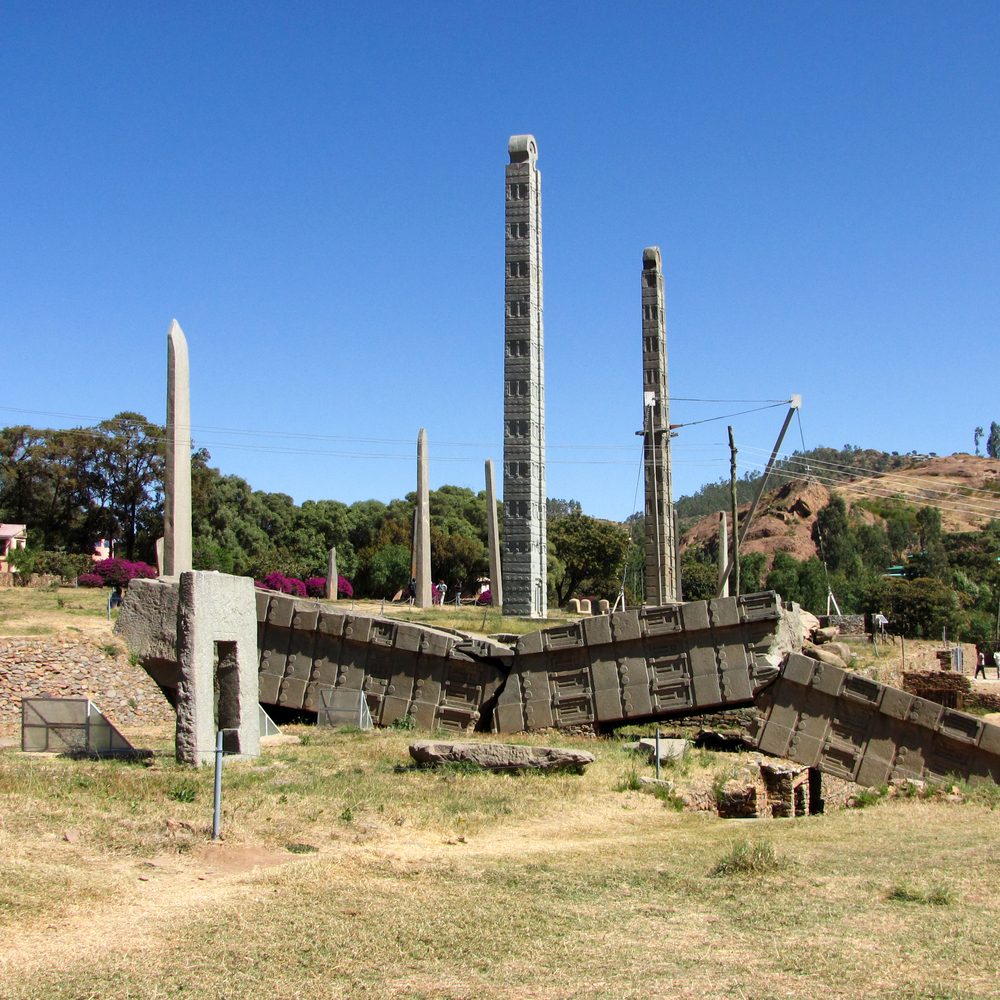Ethiopian Cultural Garden

The Ethiopian community in Cleveland is small but through the Menelik Hall Foundation it was able to establish a cultural garden. Ethiopia is the first country from Africa to be represented in Cleveland’s Cultural Gardens. Despite this achievement, many Clevelanders are unfamiliar with the Menelik Hall Foundation and the cultural garden. They are more likely to know the Empress Taytu.
The Empress Taytu is an Ethiopian restaurant that Carl and Senait Robinson founded in the St. Clair-Superior neighborhood in the mid-1990s. Carl Robinson is a doctor in Cleveland. Senait Robinson is a native Ethiopian nurse who moved to Cleveland after part of the Ethiopian army deposed Haile Selassie and set up a provisional military government in 1974.There were famines and political unrest, she sought refuge with friends in Cleveland. The Robinsons began by sponsoring Ethiopian students in Cleveland in the 1980s. The Robinsons and the students would often cook meals to thank those in the community that helped sponsor them. The community then in turn encouraged them to open a restaurant so more people could enjoy their food. While the Robinsons were originally opposed, Senait’s brother Mike agreed it was a good idea. Mike managed the restaurant, and it became a family business with their sons and daughters helping along the way.
Before opening the restaurant, the Robinsons had founded the Menelik Hall Foundation in 1987 to help Ethiopians in Ohio and abroad by providing support to students and refugees, sending health and medical supplies abroad, and promoting education and cultural understanding. The foundation also established a Sister City relationship between Bahir Dar, Ethiopia, and Cleveland in 2004. It hosts a variety of events throughout the year but the project that currently holds most of its attention is the creation of the Ethiopian cultural garden.
Menelik Hall completed the first of three phases in the Ethiopian Cultural Garden and hosted its dedication ceremony on August 24, 2019. It became the thirty-seventh cultural garden. The first phase included a twelve-foot-high wall with a five-panel ceramic mural on the front and a painting on the back. The five panel mosaic travels through different periods over Ethiopia’s 5,000-year history. The first panel begins with Lucy, one of the earliest human ancestors. The second panel represents the diversity of Ethiopia’s ethnicities. The third panel represents early civilization, the fourth represents the period of emperors, and the fifth and final panel represents the modern era of globalization.
On the back of the five panels is a reproduction of a painting by Yetmgeta, “When the Sun Gets the Moon.” Yetmgeta’s idea behind the painting is to bring attention to human impact on the environment. The plaque below the painting reads, “Despite modern technology, the Earth is being devastated.”
The garden’s second and third phases will involve the installation of two massive stone pieces. The first will be a silhouette of the Axum Stele, planned to be the centerpiece of the garden. The second will be a replica of a doorway from the Churches of Lalibela. Both the Axum Stele and the Churches of Lalibela are UNESCO World Heritage sites today.
Stelae are similar to obelisks but with rounded rather than pointed tops. Stelae were burial monuments built between the 3rd and 4th century C.E. by the Akumites. They were carved out of solid stone with ornate details to replicate the Aksumite buildings they were created in the image of. The sides of the stelae have carved windows and at the very bottom there are two false doors with carved handles and locks. While Aksumite buildings were only a few stories at most, the Axum Stele depicts thirteen floors and is the largest standing stelae in Ethiopia today.
The churches of Lalibela were constructed in the 12th century and attributed to the King Lalibela who wanted to create a “New Jerusalem” in Ethiopia due to Islamic control of the Holy Land. He hoped they would serve as an alternative pilgrimage site while the fighting continued between Christians and Muslims. There are eleven churches, each is carved out of a single block of stone. Each church is different from the next but many share design aspects. The replica doorway chosen for the Ethiopian cultural garden is one of these aspects.
Some Clevelanders’ only connection to Ethiopia is through Ethiopian restaurants like the Empress Taytu. The addition of the Ethiopian Cultural Garden not only reflects the widening scope of the Gardens’ original concept but the growing acknowledgement of diversity in Cleveland. The garden is one new place for Clevelanders to make connections to Ethiopia and the area’s local Ethiopian community members.
Images




